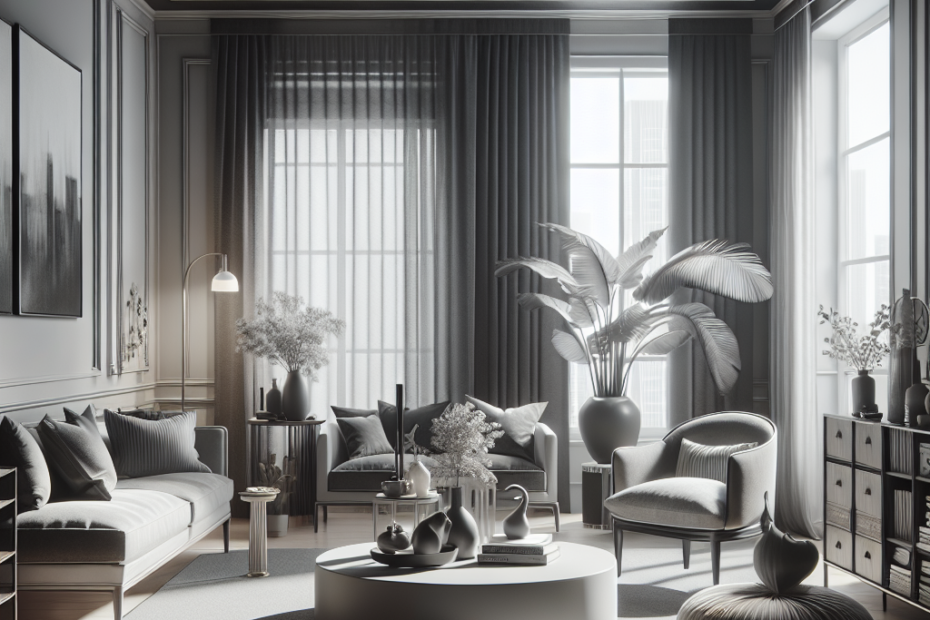“`html
In the world of interior design, personal preference often dictates color choice. However, many designers and homeowners alike lean towards the timeless appeal of monochromatic design. This approach uses variations of a single color to create soothing, harmonious interiors that never go out of style. By fully understanding the use of monochromatic color schemes, anyone can transform their interiors into visually cohesive spaces.
Monochromatic design offers multiple benefits, making it a popular choice in interior decoration. A primary advantage is its ability to instill a sense of calmness and tranquility. According to a study published by the Journal of Environmental Psychology, serene environments are often preferred, as they promote relaxation and improve mood. Additionally, using shades and tones of a single color can enhance spatial perception, making smaller rooms appear larger.
Creating a monochromatic color scheme involves more than just picking one color. It requires variety in shades, tones, and textures to maintain interest. Here’s a simple step-by-step process:
- Choose the Base Color: Start with a color you love and works well with your space.
- Explore Shades and Tones: Utilize lighter or darker variations of your chosen color to add depth and dimension.
- Incorporate Different Textures: Textures play a crucial role in monochromatic design. Mixing materials such as wood, fabric, and metal can add visual interest.
- Balance with Neutrals: While the focus is on one color, incorporating elements of black, white, or gray can help balance the palette.
Applying a monochromatic color scheme can differ depending on the room. Here’s how they can enhance various spaces:
| Room | Monochromatic Tips |
|---|---|
| Living Room | Use an anchor piece, like a sofa, in a deeper shade and balance it with lighter walls and accessories. |
| Bedroom | Select soothing tones for restful environments. Consider a comforter and wall colors in similar shades with varying textures. |
| Bathroom | Brighten up small spaces with lighter tones. Utilize tiles in varying shades to add dimension. |
Beyond aesthetics, the psychological impact of color plays a significant role in designing spaces. According to a report by the International Journal of Humanities and Social Science, colors can significantly influence emotions and productivity. Monochromatic color schemes are particularly effective in creating a cohesive and tranquil atmosphere, reducing feelings of chaos and overstimulation.
While monochromatic design has its advantages, there are common pitfalls to avoid:
- Overdoing a Single Tone: Relying too heavily on one shade can make the space flat. Diversify with different hues and textures.
- Ignoring Lighting: Light can change the perception of color. Ensure artificial and natural lighting enhance your scheme.
- Neglecting Contrast: Though it’s a single-color scheme, small contrasting elements maintain interest and focus.
Key Takeaways
- Monochromatic design uses one color, with its shades and tones, to achieve harmony.
- This approach is ideal for creating calming, spacious interiors.
- Texture, contrast, and lighting are important components of successful design.
- Diverse applications can be found in different rooms, from living rooms to bathrooms.
FAQ
-
What is a monochromatic color scheme?
It involves using one color in various shades and tones to design a space.
-
Why is monochromatic design popular?
It provides a unified, calm appearance and can make spaces look larger.
-
How can I add interest to a monochromatic room?
Incorporate different textures and light sources to enhance the design.
-
Are there any downsides to this style?
If not executed well, it can become flat or monotonous without proper contrast and texture.
-
Can monochromatic designs be used in every room?
Yes, with adaptations in tone and material, it suits any room in a home.
“`
